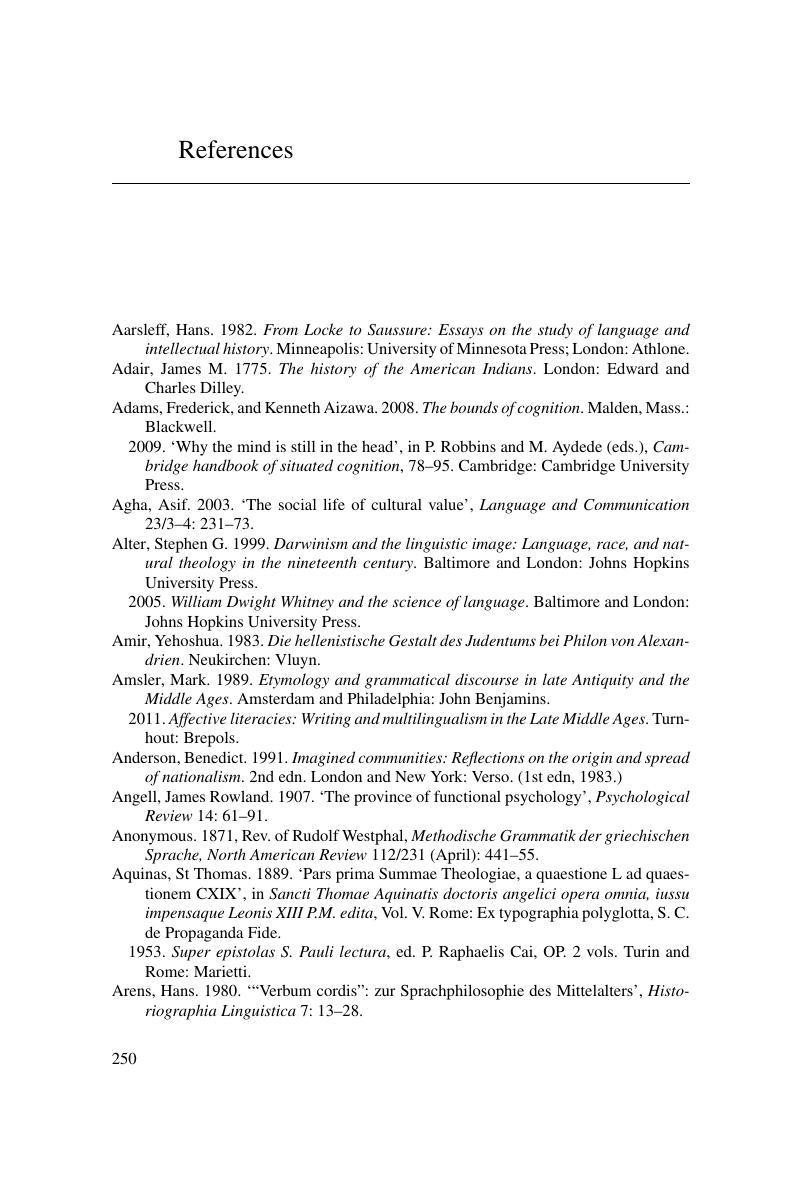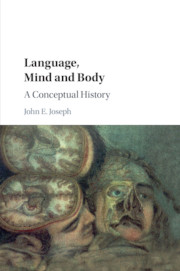Book contents
- Language, Mind and Body
- Language, Mind and Body
- Copyright page
- Contents
- Figures
- Illustrations
- Preface
- 1 Purification and Hybrids
- 2 Language Incorporated
- 3 Language in Body and Mind: Antiquity
- 4 Middle Ages
- 5 Renaissance
- 6 Eighteenth Century
- 7 Nineteenth Century
- 8 The (We have Never Been) Modern Age
- 9 Abstract and Concrete Language
- 10 Conclusion
- Notes
- References
- Index of Names
- Subject Index
- References
References
Published online by Cambridge University Press: 12 December 2017
- Language, Mind and Body
- Language, Mind and Body
- Copyright page
- Contents
- Figures
- Illustrations
- Preface
- 1 Purification and Hybrids
- 2 Language Incorporated
- 3 Language in Body and Mind: Antiquity
- 4 Middle Ages
- 5 Renaissance
- 6 Eighteenth Century
- 7 Nineteenth Century
- 8 The (We have Never Been) Modern Age
- 9 Abstract and Concrete Language
- 10 Conclusion
- Notes
- References
- Index of Names
- Subject Index
- References
Summary

- Type
- Chapter
- Information
- Language, Mind and BodyA Conceptual History, pp. 250 - 269Publisher: Cambridge University PressPrint publication year: 2017



